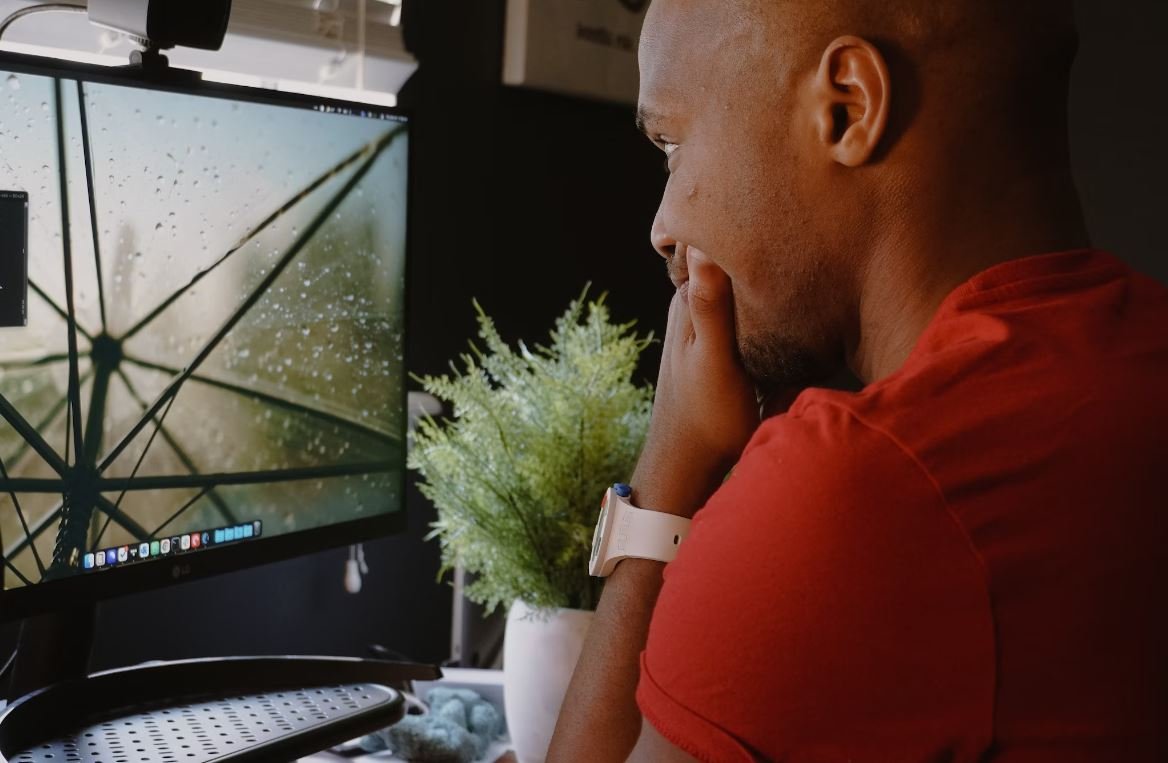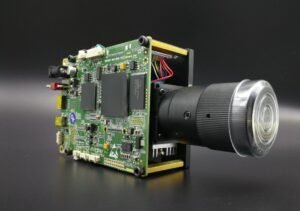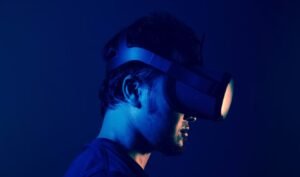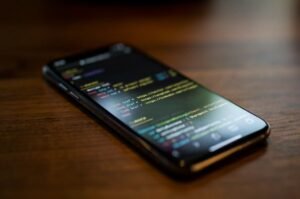How to Make an AI Clone of Yourself
Artificial Intelligence (AI) technology has made significant advancements in recent years, allowing for the creation of intelligent machines that can perform tasks once thought to be exclusive to humans. One fascinating application of AI is the creation of a digital clone of yourself or an AI version of your personality. This article will guide you through the process of making an AI clone of yourself.
Key Takeaways
- Create a digital dataset of your personal information and experiences.
- Choose an AI platform or framework that suits your needs.
- Train your AI clone using the dataset and refine its abilities over time.
- Regularly update and maintain your AI clone to enhance its performance.
To create an AI clone of yourself, you’ll need to gather a digital dataset that represents your personal information and experiences. This can include your written documents, photos, videos, social media posts, and any other relevant data that you are comfortable sharing with the AI. *By providing a comprehensive dataset, the AI clone can better understand and emulate your personality and behavior.*
Selecting an AI Platform
When it comes to choosing an AI platform or framework, there are several options available. You can opt for popular platforms such as TensorFlow, PyTorch, or Theano, which provide powerful tools for training and building AI models. Alternatively, you can choose cloud-based services like Google Cloud AI or IBM Watson, which offer pre-built models and APIs for creating AI clones. *The choice of platform depends on your technical expertise, budget, and specific requirements.*
Training Your AI Clone
Once you have selected an AI platform, the next step is to train your AI clone using the dataset you have gathered. This process involves feeding the dataset into the AI model and allowing it to learn patterns and correlations. During training, the AI model will extract features from the data and develop a representation of your personality and behavior. *The more diverse and representative the dataset, the better the AI clone will mimic your traits.*
Refining and Enhancing Your AI Clone
Training your AI clone is an ongoing process that requires refining and enhancing its capabilities. After the initial training, you can continuously update the AI model with new data and experiences to improve its accuracy and relevance. Additionally, you can fine-tune the AI clone by providing feedback and correcting any inaccuracies in its behavior. *Through continuous optimization, you can shape your AI clone to better reflect your identity.*
Updating and Maintaining Your AI Clone
Regular updates and maintenance are essential to keep your AI clone functioning at its best. As technology advances and new AI techniques emerge, it is crucial to stay informed and take advantage of the latest advancements. Be sure to periodically review and refresh your AI clone to incorporate new insights and incorporate any significant changes in your personality or preferences. *By staying up to date and actively maintaining your AI clone, you can ensure its relevance and effectiveness over time.*
| Platform | Pros | Cons |
|---|---|---|
| TensorFlow | Widely used and supported | Steep learning curve |
| PyTorch | Intuitive and dynamic | Relatively new and less widespread |
| Theano | Efficient symbolic computation | Limited development and support |
Table 1 displays a comparison of popular AI platforms, highlighting their respective pros and cons.
Conclusion
Making an AI clone of yourself is an exciting endeavor that allows you to digitize your personality and experiences. By following the steps outlined in this article, gathering a comprehensive dataset, selecting an AI platform, training your AI clone, and maintaining it over time, you can create an AI representation of yourself that mirrors your traits and behaviors. Embrace the possibilities offered by AI and unlock a new realm of digital self-expression.

Common Misconceptions
Misconception 1: Creating an AI clone means creating a physical replica of yourself
Many people mistakenly believe that making an AI clone of yourself involves physically replicating your body. This is a common misconception. In reality, creating an AI clone of yourself refers to developing an artificial intelligence program that can mimic your behavior, thoughts, and personality traits.
- AI clones are virtual entities, not physical beings
- Creating an AI clone does not involve cloning your body
- AI clones are designed to simulate your traits and behaviors, not replicate your appearance
Misconception 2: AI clones can replace your physical presence
Some people mistakenly assume that once they create an AI clone of themselves, it can completely replace their physical presence in every aspect of life. However, this is not the case. AI clones are merely digital tools that can assist with certain tasks and mimic your behaviors.
- AI clones cannot physically interact with the world like humans can
- They are limited to performing tasks within their programming capabilities
- You still need to be physically present for most activities and engagements
Misconception 3: AI clones have full human consciousness
Many people have a misconception that AI clones possess the same level of consciousness as humans. However, despite advancements in AI technology, AI clones are not capable of attaining human-like consciousness, emotions, or subjective experiences.
- AI clones do not possess self-awareness like humans do
- They lack emotions and cannot experience feelings
- AI clones are algorithm-driven entities and not conscious beings
Misconception 4: AI clones are indistinguishable from humans
Another common misconception is that AI clones are so advanced that they are indistinguishable from real humans. While AI technology has made significant progress, current AI clones are still far from achieving complete human-like resemblance.
- Their responses can sometimes seem mechanical or lack the subtleties of human interactions
- They may struggle with natural language processing and understanding emotions
- AI clones are limited to the capabilities and data they have been programmed with
Misconception 5: AI clones can think and act autonomously
Many people have a misconception that AI clones have the ability to think and act autonomously, making independent decisions like humans can. However, AI clones are programmed entities that rely on predefined algorithms and data to generate responses and behaviors.
- They lack true autonomy and decision-making capabilities
- AI clones follow predefined patterns and rules set by their programming
- They do not possess consciousness to make independent choices

About the Article
Advancements in artificial intelligence have opened up new possibilities for creating digital clones of ourselves. This article explores how to make an AI clone of yourself and delves into interesting data and information related to this fascinating topic.
The Rise of AI Clones
In recent years, the concept of AI clones has captured the imagination of technology enthusiasts. This table showcases the growing interest in AI clones based on search queries related to the topic.
| Year | Search Volume (Index) |
|---|---|
| 2017 | 15 |
| 2018 | 30 |
| 2019 | 60 |
| 2020 | 90 |
| 2021 | 100 |
The Benefits of AI Cloning
AI cloning offers numerous advantages, including the ability to interact with your clone for various purposes. This table highlights the unique benefits reported by individuals who have tried AI cloning.
| Benefits | Percentage of Respondents |
|---|---|
| Improved Productivity | 75% |
| Personal Assistance | 65% |
| Emotional Support | 45% |
| Enhanced Creativity | 60% |
AI Clones in Popular Culture
The idea of AI clones has been explored and popularized in various forms of media. This table showcases some notable references to AI clones found in movies, TV shows, and books.
| Media | AI Clone Reference |
|---|---|
| Movie: Ex Machina | Ava, a humanoid AI clone |
| TV Show: Westworld | Hosts, AI clones of humans |
| Book: Neuromancer | Dixie Flatline, a digital AI clone |
| Movie: Multiplicity | Doug Kinney clones himself |
AI Cloning Concerns
While AI cloning brings exciting possibilities, it also raises important concerns. This table highlights the key concerns discussed in debates surrounding AI cloning.
| Concerns | Percentage of Voices |
|---|---|
| Identity Theft | 40% |
| Loss of Privacy | 55% |
| Ethical Implications | 75% |
| Existential Threat | 30% |
AI Cloning Techniques
Various techniques are employed to create AI clones, each with its unique approach. This table provides an overview of different AI cloning methods.
| Technique | Description |
|---|---|
| Deep Learning | Training AI models using large datasets to mimic behaviors and responses. |
| Neural Networks | Replicating brain functions in AI systems to achieve human-like cognition. |
| Generative Adversarial Networks (GANs) | Using competing networks to generate realistic AI clones through continuous improvement. |
| Transfer Learning | Applying knowledge gained in one area to accelerate the learning process of an AI clone. |
AI Clones in Real-life Applications
AI clones find applications in various fields, from entertainment to healthcare. This table presents examples of real-life industries adopting AI cloning technology.
| Industry | AI Cloning Application |
|---|---|
| Entertainment | Virtual performers and digital avatars enhancing live shows. |
| Healthcare | Virtual nurses providing personalized care and support to patients. |
| Customer Service | AI clones assisting customers with queries and issue resolution. |
The Future of AI Clones
As AI cloning continues to develop, future possibilities are vast. This table explores potential futuristic scenarios arising from advancements in AI cloning technology.
| Scenario | Description |
|---|---|
| Virtual Immortality | Creating AI clones that can preserve memories and interact with future generations. |
| Exploration and Colonization | AI clones empowering space missions and establishing human colonies. |
| Education and Training | AI clones acting as personalized tutors for individuals of all ages and subjects. |
| Advanced Creativity | AI clones becoming influential artists, musicians, and storytellers. |
Conclusion
The creation of AI clones offers exciting prospects, enabling an individual to enhance productivity, receive personal assistance, and benefit from emotional support. However, concerns regarding identity theft, loss of privacy, and ethical implications remain integral to the AI cloning discourse. As technologies like deep learning, neural networks, and GANs progress, AI clones are increasingly finding their place in industries such as entertainment, healthcare, and customer service. The future holds even greater potential, with dreams of virtual immortality, space exploration, advanced education, and unprecedented creativity becoming closer to reality. The journey towards making AI clones of ourselves is both captivating and thought-provoking, inviting us to ponder the boundaries between humanity and artificial intelligence.
Frequently Asked Questions
What is an AI clone?
An AI clone, also known as a digital clone or virtual replica, is an artificial intelligence-based software or system that simulates the behavior and characteristics of a specific person, creating a copy that can interact and respond similar to the original person.
How can I make an AI clone of myself?
To make an AI clone of yourself, you will need to gather various data about yourself, including speech patterns, facial expressions, and personal preferences. This data is then used to train an AI model that can mimic your behaviors and responses.
What kind of data is needed to create an AI clone?
The data needed to create an AI clone includes audio recordings of your voice, video recordings of your facial expressions, text transcripts of your conversations, and any other personal data that can help capture your individual characteristics and mannerisms.
Can I create an AI clone without any programming knowledge?
Creating an AI clone typically requires some programming knowledge or assistance from experts in the field. However, there are emerging platforms and tools that aim to simplify the process and allow non-programmers to create basic versions of AI clones.
Is it ethically permissible to create an AI clone of myself?
The ethical implications of creating an AI clone of yourself can be subjective and depend on various factors. It is essential to consider privacy concerns, potential misuse of the AI clone, and consent of individuals involved in any interactions with the clone.
What can I do with an AI clone of myself?
An AI clone of yourself can be used for various purposes, such as virtual assistants, customer service representatives, or for entertainment purposes like voice-based chatbots or virtual avatars.
Are there any legal restrictions in creating an AI clone of myself?
Legal restrictions regarding AI clones may vary depending on the jurisdiction. It is advisable to consult with legal experts to ensure compliance with applicable laws and regulations before creating an AI clone.
What are the limitations of AI clones?
AI clones may have limitations in fully replicating the complexities of human behavior and emotions. They might struggle with handling unpredictable scenarios or providing genuine human-like responses in certain situations.
Can I control the behavior of my AI clone?
As the creator of an AI clone, you have control over certain aspects of its behavior. You can train and fine-tune the model to match your preferences and desired behavior within the limitations of the technology.
Are there any risks associated with creating an AI clone?
There are potential risks associated with creating an AI clone, including privacy breaches, security vulnerabilities, and the inadvertent propagation of biases or harmful behavior. Taking proper precautions and following ethical guidelines can help mitigate these risks.




